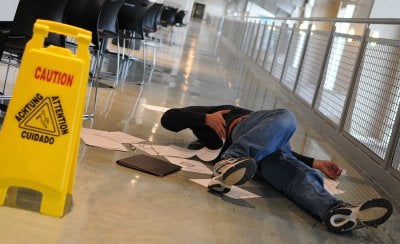A slip and fall accident can result in injuries both mild and severe. On the mild end of the spectrum, individuals may only suffer momentary pain, such as that caused by a stubbed toe. More serious cases can involve sprained ankles, fractured bones, spinal cord damage, or traumatic brain injury (TBI). If you’ve sustained injuries in a slip and fall accident in the Riverside area, you have the right to contact a personal injury lawyer to discuss your legal options. 
Evaluating Injuries
Your personal injury lawyer will assess your case to determine if certain elements are present. First, victims of slip and fall accidents must have sustained damages or losses directly caused by the accident. If you fell, but weren’t hurt and didn’t require medical care, then you cannot hold someone liable for the accident. Your medical records should be sufficient to prove your damages.
Identifying Hazardous Conditions
Next, your personal injury lawyer will consider whether a hazardous condition was present that caused you to slip or trip. Some common causes of slip and fall accidents include inadequate lighting, uneven floorboards or missing floorboards, the lack of handrails, and the presence of spilled liquid on the floor. However, the mere presence of a hazardous condition isn’t enough to prove negligence in a personal injury case. In order to prove that the property owner or manager was negligent, your lawyer must prove that the individual or an employee caused the hazardous condition or that these individuals knew of the hazardous condition, but did not take action to correct it in a timely fashion. Alternatively, your lawyer may argue that the defendant should have known of the hazardous condition because any reasonable person in the same situation would have discovered it and fixed it.
Assessing Reasonableness
The determination of the degree of reasonableness on behalf of the defendant is often a key issue in slip and fall cases. Many factors may be evaluated to assess the defendant’s reasonableness, including whether the defendant has a history of regularly examining and fixing the property, whether there is evidence of regular maintenance, and whether warning signs or caution tape had been placed in the area.

